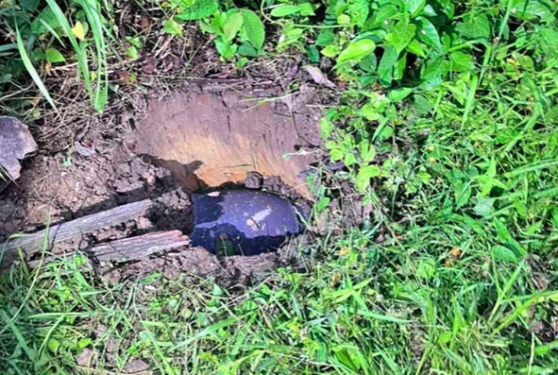MALAYSIA is not discounting taking legal action and invoking international space treaties if debris found in Sarawak is that of a Chinese rocket, the Science, Technology and Innovation Ministry (MOSTI) said.
On Saturday (July 30), China’s Long March 5B carrier rocket crashed back to Earth, with pieces of the booster cropping up in multiple spots along the re-entry path.
The next day, a video recording of the suspected rocket debris in Sarawak went viral on social media.
In a statement today, MOSTI said a team was sent out yesterday (Aug 1) to investigate a local resident’s report of debris in Miri, Sarawak.
The team, comprising representatives from the Space Division, Malaysian Space Agency (MYSA) and the Atomic Energy Licensing Board (AELB), carried out preliminary investigations in two locations where debris was found.
These were Kampung Nyalau in Bintulu, Sarawak, and Pekan Sepupuk Lama in Batu Niah, Miri.

“Preliminary investigations show that the first object (in Bintulu), measuring around five inches, does not emit radiation.
“No radioactive elements were detected on the object either,” the ministry said, adding that the team was assisted by the Fire and Rescue Department’s Hazardous Material (Hazmat) team and local district police.
Similarly, the second object in Miri (measurements not specified) does not show signs of radioactivity either.
Investigations still underway
“Both objects are safe for further investigations and analysis to be carried out (by MYSA and the Chemistry Department),” it said.
The ministry said investigations would also be done to determine whether the two objects are debris from the Chinese rocket, which was launched into space on July 24.
“Findings of that investigation and analysis will be announced later, and appropriate action will be considered in line with the Malaysian Space Board Act 2022 and international space treaties under the purview of the United Nations Office for Outer Space Affairs (UNOOSA).”
MYSA previously confirmed rocket fragments had crossed the country’s airspace and were detected in several areas, including Sarawak airspace.
According to astrophysics expert and satellite tracker Jonathan McDowell, rocket debris fell in Sarawak as well as Kalimantan, Indonesia.
No casualties or property damages have been reported, but as debris is near villages, “a few hundred meters, either way, could have been a different story”.
The Long March 5B was sent out to transport a new module toward China’s under-construction Tiangong space station, Space.com reported.

The rocket’s core stage (weighing some 22.5 metric tonnes) reached orbit with the module and was then pulled back down to Earth by atmospheric drag over the next six days.
However, the core stage “crashed back” to Earth uncontrolled on Saturday, slamming into Earth’s atmosphere over the Indian Ocean, the portal said.
“Much of the booster burned up as it fell, but a significant portion of it – about 20% to 40% by weight, experts have estimated – survived the fiery journey.” – Aug 2, 2022









